Latest Electricity News - World
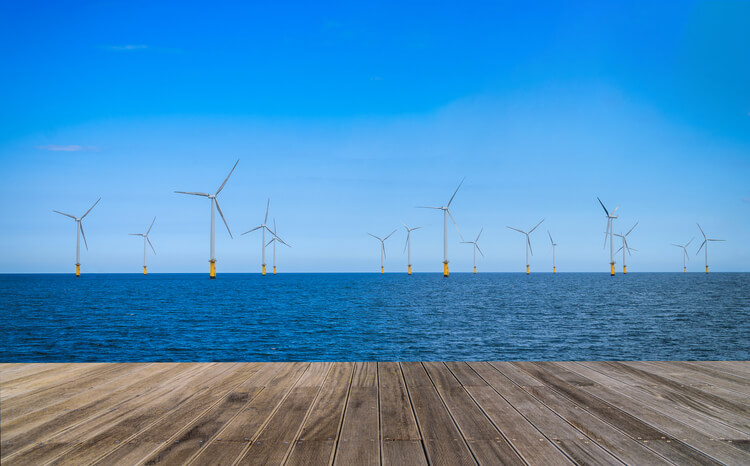
Netherlands' Renewables Drive Putting Pressure On Grid
The Netherlands grid crisis exposes how rapid renewable energy growth is straining transmission capacity. Solar, wind, and electric vehicle demand are overloading networks, forcing officials to urge reduced peak-time power use and accelerate national grid modernization plans.
Main Points
The Netherlands grid crisis refers to national electricity congestion caused by surging renewable energy generation and rising consumer demand.
✅ Grid congestion from rapid solar and wind expansion
✅ Strained transmission and distribution capacity
✅ National investment in smart grid upgrades
The Dutch government is urging households to reduce electricity consumption between 16:00 and 21:00 — a signal that the country’s once-stable power grid is under serious stress. The call comes amid an accelerating shift to wind and solar power that is overwhelming transmission infrastructure and creating “grid congestion” across regions, as seen in Nordic grid constraints this year.
In a government television campaign, a narrator warns: “When everyone uses electricity at the same time, our power grid can become overloaded. That could lead to failures — so please try to use less electricity between 4 pm and 9 pm.” The plea reflects a system where supply occasionally outpaces the grid’s ability to distribute it, with some regions abroad issuing summer blackout warnings already.
According to Dutch energy firm Eneco’s CEO, Kys-Jan Lamo, the root of the problem lies in the mismatch between modern renewable generation and a grid built for centralized fossil fuel plants. He notes that 70% of Eneco’s output already comes from solar and wind, and this “grid congestion is like traffic on the power lines.” Lamo explains:
“The grid congestion is caused by too much demand in some areas of the network, or by too much supply being pushed into the grid beyond what the network can carry.”
He adds that many of the transmission lines in residential areas are narrow — a legacy of when fewer and larger power plants fed electricity through major feeder lines, underscoring grid vulnerabilities seen elsewhere today. Under the new model, renewable generation occurs everywhere: “This means that electricity is now fed into the grid even in peripheral areas with relatively fine lines — and those lines cannot always cope.”
Experts warn that resolving these issues will demand years of planning and immense investment in smarter grid infrastructure over the coming years. Damien Ernst, an electrical engineering professor at Liège University and respected voice on European grids, states that the Netherlands is experiencing a “grid crisis” brought on by “insufficient investment in distribution and transmission networks.” He emphasizes that the speed of renewable deployment has outpaced the grid’s capacity to absorb it.
Eneco operates a “virtual power plant” control system — described by Lamo as “the brain we run” — that dynamically balances supply and demand. During periods of oversupply, the system can curtail wind turbines or shut down solar panels. Conversely, during peak demand, the system can throttle back electricity provision to participating customers in exchange for lower tariffs. However, these techniques only mitigate strain — they cannot replace the need for physical upgrades or bolster resilience to extreme weather outages alone.
The bottleneck has begun limiting new connections: “Consumers often want to install heat pumps or charge electric vehicles, but they increasingly find it difficult to get the necessary network capacity,” Lamo warns. Businesses too are struggling. “Companies often want to expand operations, but cannot get additional capacity from grid operators. Even new housing developments are affected, since there’s insufficient infrastructure to connect whole communities.”
Currently, thousands of businesses are queuing for network access. TenneT, the national grid operator, estimates that 8,000 firms await initial connection approval, and another 12,000 seek to increase their capacity allocations. Stakeholders warn that unresolved congestion risks choking economic growth.
According to Kys-Jan Lamo: “Looking back, almost all of this could have been prevented.” He acknowledges that post-2015 climate commitments placed heavy emphasis on adding generation and on grid modernization costs more broadly, but “we somewhat underestimated the impact on grid capacity.”
In response, the government has introduced a national “Grid Congestion Action Plan,” aiming to accelerate approvals for infrastructure expansions and to refine regulations to promote smarter grid use. At the same time, feed-in incentives for solar power are being scaled back in some regions, and certain areas may even impose charges to integrate new solar systems into the grid.
The scale of what’s needed is vast. TenneT has proposed adding roughly 100,000 km of new power lines by 2050 and investing in doubling or tripling existing capacity in many areas. However, permit processes can take eight years before construction begins, and many projects require an additional two years to complete. As Lamo points out, “the pace of energy transition far exceeds the grid’s existing capacity — and every new connection request simply extends waiting lists.”
Unless grid expansion keeps up, and as climate pressures intensify, the very clean energy future the Netherlands is striving for may remain constrained by the physics of distribution.
Related Articles
Sign Up for Electricity Forum’s News Service
Weekly updates from our FREE News Service—get the latest news, breakthrough technologies, and expert insights, delivered straight to your inbox.
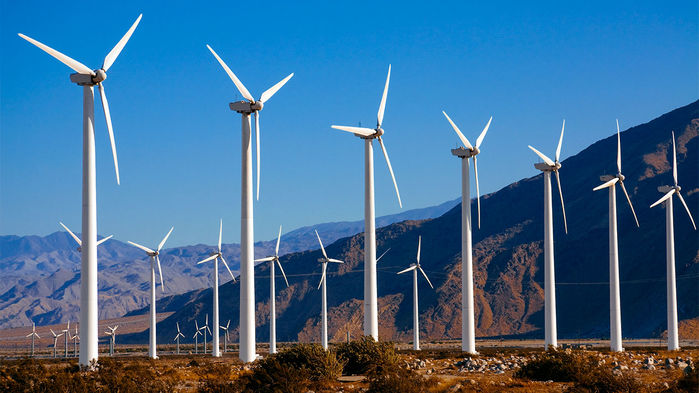
Spain Breaks Gas Link with Wind and Solar
Spain has broken its reliance on fossil gas as soaring wind and solar energy drive Europe’s lowest wholesale electricity prices, reducing emissions, stabilizing the grid, and advancing renewable power, energy independence, and clean transition goals across the EU.
How Has Spain Broken the Gas Link with Wind and Solar??
Spain has broken the link between gas and power prices by rapidly expanding wind and solar generation, which now supplies nearly half its electricity, cutting fossil fuel influence by 75% since 2019 and reducing power costs 32% below the EU average.
✅ Wind and solar cut fossil influence by 75% since 2019
✅ Power prices 32% below EU average in 2025
✅ Renewables meet nearly half of national electricity demand
Spain has emerged as one of Europe’s most affordable electricity markets, largely due to its rapid expansion of wind and solar power. By decoupling its wholesale electricity prices from volatile fossil gas and coal, Spain has achieved a 32 percent lower average wholesale price than the EU average in the first half of 2025. This remarkable shift marks a dramatic turnaround from 2019, when Spain had some of the highest power prices in Europe.
According to new data, the influence of fossil fuels on Spain’s electricity prices has fallen by 75 percent since 2019, mirroring how renewables have surpassed fossil fuels in Europe over the same period, dropping from 75 percent of hours tied to gas costs to just 19 percent in early 2025. “Spain has broken the ruinous link between power prices and volatile fossil fuels, something its European neighbours are desperate to do,” said Dr. Chris Rosslowe, Senior Energy Analyst at Ember.
The change is driven by a surge in renewable generation. Between 2019 and mid-2025, Spain added more than 40 gigawatts of new solar and wind capacity—second only to Germany, whose power market is twice the size. Wind and solar now meet nearly half (46 percent) of Spain’s electricity demand, compared with 27 percent six years ago. As a result, fossil generation has fallen to 20 percent of total demand, well below the levels seen in other major economies such as Germany (41 percent) and Italy (43 percent).
This renewable growth has also cut Spain’s dependence on imported fuels. In the past five years, new solar and wind plants have avoided 26 billion cubic metres of gas imports, saving €13.5 billion—five times the amount the country invested in transmission infrastructure over the same period. The Central Bank of Spain estimated that wholesale electricity prices would have been 40 percent higher in 2024 if renewables had not displaced fossil generation, and neighboring France has seen negative prices during periods of renewable surplus.
August 2025 marked a historic milestone: Spain recorded a full month without coal-fired generation for the first time. A decade earlier, coal accounted for a quarter of the nation’s electricity supply. Gas use has also declined steadily, from 26% of demand in 2019 to 19% this year.
However, the system still faces challenges. Following the April 28th Iberian blackout, Spain has relied more heavily on gas-fired plants to stabilize the grid. These services—such as voltage control and balancing—have proven to be expensive, with costs doubling since the blackout and accounting for 57 percent of the average electricity price in May 2025, up from 14 percent the previous year. Curtailment of renewables has also tripled, reaching 7.2 percent of generation between May and July.
Despite being Europe’s fourth-largest electricity market, Spain ranks only 13th in battery storage capacity, underscoring the need for further investment in clean flexibility solutions, such as grid-scale batteries to provide flexibility and stronger interconnections. Post-blackout reforms aim to address this weakness and ensure the gains from renewable integration are not lost.
“Spain risks sliding back into costly gas reliance amid post-blackout fears,” warned Rosslowe. “Boosting grids and batteries will help Spain break free from fossil dependency for good.”
With record-low electricity prices and one of the fastest decoupling rates in Europe, Spain’s experience demonstrates how large-scale wind and solar adoption can reshape energy economics—and offers a roadmap for other nations seeking to escape the volatility of fossil fuels.
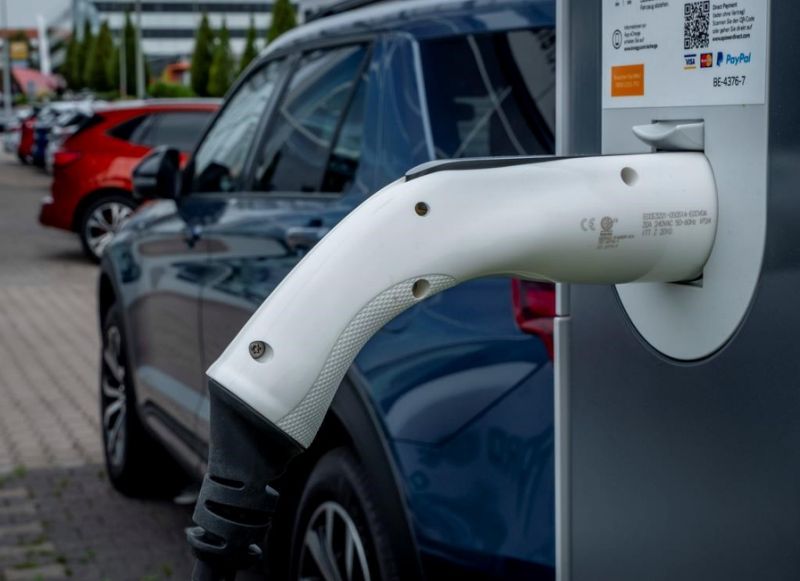
UK Electric Vehicle Sales Surge to Record High
UK electric vehicle sales reached a record high in September, with battery and hybrid cars making up over half of new registrations. SMMT credits carmaker discounts, new models, and a £3,750 EV grant for driving strong demand across the UK market.
Why are UK Electric Vehicle Sales Surging to a Record High?
UK electric vehicle sales are surging to a record high because automakers are offering major discounts, more models are available than ever, and the government’s new £3,750 EV grant is making electric cars more affordable and appealing to both fleets and private buyers.
✅ BEV sales up nearly one-third in September
✅ Over half of all new cars are now electrified
✅ £3,750 EV grants boost consumer confidence
Electric vehicle (EV) sales in the United Kingdom reached a record high last month, marking a significant milestone in the country’s transition to cleaner transportation. According to the latest figures from the Society of Motor Manufacturers and Traders (SMMT), sales of pure battery electric vehicles (BEVs) surged by nearly one-third to 72,779 units in September, while plug-in hybrid registrations grew even faster.
The combined total of fully electric and hybrid vehicles accounted for more than half of all new car registrations, underscoring the growing appeal of electrified transport, alongside global EV market growth, among both businesses and private consumers. In total, 312,887 new vehicles were registered across the country — the strongest September performance since 2020, according to SMMT data.
SMMT chief executive Mike Hawes said the surge in electrified vehicle sales showed that “electrified vehicles are powering market growth after a sluggish summer.” He credited carmaker incentives, a wider choice of models, and government support for helping accelerate adoption, though U.S. EV market share dipped in Q1 2024 by comparison. “Industry investment in electric vehicles is paying off,” Hawes added, even as he acknowledged that “consumer demand still trails ambition.”
The UK government’s new electric car grant scheme has played a significant role in the rebound. The program offers buyers discounts of up to £3,750 on eligible EVs priced under £37,000. So far, more than 20,000 motorists have benefited, with 36 models approved for reductions of at least £1,500. Participating manufacturers include Ford, Toyota, Vauxhall, and Citroën.
Ian Plummer, chief commercial officer at Autotrader, said the grant had given a “real lift to the market,” echoing fuel-crisis EV inquiry surge in the UK. He noted that “since July, enquiries for new electric vehicles on Autotrader are up by almost 50%. For models eligible for the grant, interest has more than doubled.”
While the majority of BEVs — about 71.4% — were purchased by companies and fleets, the number of private buyers has also been increasing. Zero-emission vehicles now account for more than one in five (22.1%) new car registrations so far in 2025, similar to France’s 20% EV share record, highlighting the growing mainstream appeal of electric mobility.
The surge comes amid a challenging backdrop for the automotive sector, even as U.S. EV sales soared into 2024 across the Atlantic. The UK car industry is still reeling from the effects of US trade tariffs and recent disruptions, such as Jaguar Land Rover’s production shutdown following a cyberattack. Despite these hurdles, the strong September figures have boosted confidence in the industry’s recovery trajectory, and EU EV share grew during lockdown months offers precedent for resilience.
Among individual models, the Kia Sportage, Ford Puma, and Nissan Qashqai led overall sales, while two Chinese vehicles — the Jaecoo 7 and BYD Seal U — entered the top ten, reflecting China’s growing footprint in the UK market. Analysts say the arrival of competitively priced Chinese EVs could further intensify competition and drive prices lower for consumers.
With electrified vehicles now dominating new registrations and fresh government incentives in place, industry observers believe the UK is gaining momentum toward its long-term net-zero goals. The challenge, however, remains converting business fleet enthusiasm into sustained private-buyer confidence through affordable models, with UK consumer price concerns still a factor, reliable charging infrastructure, and continued policy support.
Related Articles
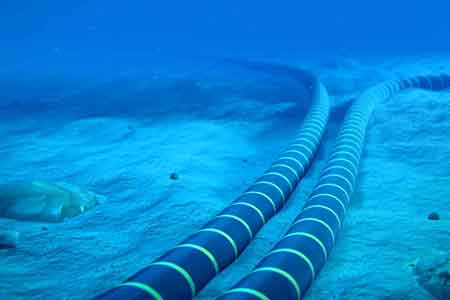
ABL Secures Contract for UK Subsea Power
ABL has secured a contract for the UK Subsea Power Link, highlighting ABL Group’s marine warranty role in Eastern Green Link 2, a 2 GW offshore electricity superhighway connecting Scotland and England to enhance grid reliability and renewable energy transmission.
Key Points: ABL Group’s contract for the UK Subsea Power Link
ABL Group has been appointed to provide marine warranty survey services for the 2 GW Eastern Green Link 2 subsea interconnector between Scotland and England.
✅ Manages vessel suitability checks, installation oversight, and DP assurance
✅ Strengthens UK grid reliability and advances the clean energy transition
✅ Sizeable contract valued between USD 1 million and 3 million
Energy and marine consultancy ABL, a subsidiary of ABL Group, has been awarded a contract by Eastern Green Link 2 (EGL2) to provide marine warranty survey (MWS) services for the installation of a new 2 GW subsea power connection between Scotland and England.
EGL2 is one of the United Kingdom’s most significant energy-infrastructure projects, involving the creation of a 505-kilometre “electricity superhighway” that will enable simultaneous power transfer between Peterhead in Aberdeenshire and Drax in North Yorkshire, mirroring a renewable power link announced for the same corridor recently. The project is designed to strengthen grid resilience, integrate renewable energy from Scotland’s offshore resources, and advance the UK’s broader energy transition goals.
Under the terms of the contract, ABL will be responsible for the technical review and approval of the project and procedural documentation, as well as conducting suitability surveys of the proposed fleet for marine transportation and installation operations. The company will also provide dynamic positioning (DP) assurance where required and will review and approve all warranted operations through on-site attendances, reflecting practices used on projects like the Great Northern Transmission Line in North America.
Cable-laying operations for the link are scheduled to take place between January and September 2028, amid wider efforts to fast-track grid connections across the UK. According to ABL, the engagement represents a “sizeable” contract, valued between USD 1 million and 3 million.
“This appointment reflects ABL's reputation as a trusted MWS partner for major power transmission infrastructure development and reinforces our position at the forefront of supporting the UK's energy transition,” said Hege Norheim, CEO of ABL Group. “We look forward to contributing to this strategic initiative.”
The subsea interconnector, known as Eastern Green Link 2, will transmit up to 2 gigawatts of electricity—enough to power approximately 2 million homes. It forms part of the Great Grid Upgrade, National Grid’s nationwide program to modernize and expand the transmission network in preparation for a low-carbon future, alongside a recent 2 GW substation milestone.
By linking renewable-rich northern Scotland with high-demand regions in England, EGL2 is expected to reduce congestion on the existing grid by leveraging HVDC technology to improve transfer efficiency, enhance security of supply, and facilitate the more efficient flow of surplus renewable energy south. The connection will also support the UK government’s target of decarbonizing the electricity system by 2035.
ABL’s appointment follows a period of intensive marine and geotechnical surveys along the proposed cable route to assess seabed conditions and environmental sensitivities. The company’s marine warranty oversight will ensure that transportation and installation operations meet strict safety, technical, and environmental standards demanded by insurers and project partners, as seen in a recent cross-border transmission approval in North America.
For ABL Group, which provides engineering and risk services to the offshore energy and marine industries worldwide, the contract marks another milestone in its expanding portfolio of subsea power and transmission projects across Europe. With operations set to begin in 2028, the Eastern Green Link 2 initiative represents both a major engineering challenge and a key enabler of the UK’s offshore energy ambitions, echoing a recent offshore wind power milestone in the U.S.
Related Articles
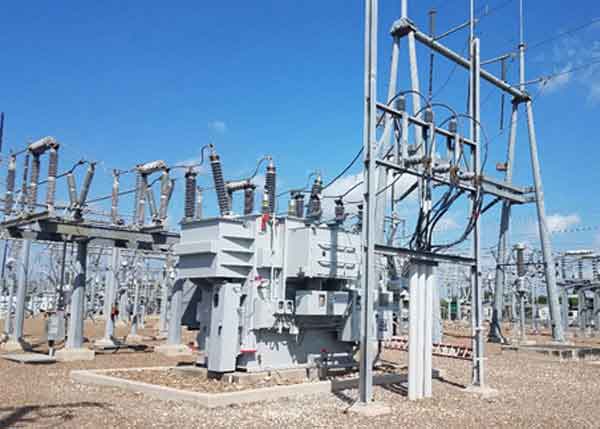
Russia Builds Power Lines to Reactivate Zaporizhzhia Plant
Zaporizhzhia Nuclear Plant Restart signals new high-voltage transmission lines to Mariupol, Rosatom grid integration, and IAEA-monitored safety amid occupied territory risks, cooling system shortfalls after the Kakhovka dam collapse, and disputed international law.
Key Points
A Russian plan to reconnect and possibly restart ZNPP via power lines, despite IAEA safety, cooling, and legal risks.
✅ 80 km high-voltage link toward Mariupol confirmed by imagery
✅ IAEA warns of safety risks and militarization at the site
✅ Cooling capacity limited after Kakhovka dam destruction
Russia is actively constructing new power lines to facilitate the restart of the Zaporizhzhia Nuclear Power Plant (ZNPP), Europe's largest nuclear facility, which it seized from Ukraine in 2022. Satellite imagery analyzed by Greenpeace indicates the construction of approximately 80 kilometers (50 miles) of high-voltage transmission lines and pylons connecting the plant to the Russian-controlled port city of Mariupol. This development marks the first tangible evidence of Russia's plan to reintegrate the plant into its energy infrastructure.
Strategic Importance of Zaporizhzhia Nuclear Power Plant
The ZNPP, located on the eastern bank of the Dnipro River in Enerhodar, was a significant asset in Ukraine's energy sector before its occupation. Prior to the war, the plant was connected to Ukraine's national grid, which later saw resumed electricity exports, via four 750-kilovolt lines, two of which passed through Ukrainian-controlled territory and two through areas under Russian control. The ongoing conflict has damaged these lines, complicating efforts to restore the plant's operations.
In March 2022, Russian forces captured the plant, and by 2023, all six of its reactors had been shut down. Despite this, Russian authorities have expressed intentions to restart the facility. Rosatom, Russia's state nuclear corporation, has identified replacing the power grid as one of the critical steps necessary for resuming operations, even as Ukraine pursues more resilient wind power to bolster its energy mix.
Environmental and Safety Concerns
The construction of new power lines and the potential restart of the ZNPP have raised significant environmental and safety concerns, as the IAEA has warned of nuclear risks from grid attacks in recent assessments. Greenpeace has reported that the plant's cooling system has been compromised due to the destruction of the Kakhovka Reservoir dam in 2023, which previously supplied cooling water to the plant. Currently, the plant relies on wells for cooling, which are insufficient for full-scale operations.
Additionally, the International Atomic Energy Agency (IAEA) has expressed concerns about the militarization of the plant. Reports indicate that Russian forces have established defensive positions and trenches around the facility, with mines found at ZNPP by UN inspectors, raising the risk of accidents and complicating efforts to ensure the plant's safety.
International Reactions and Legal Implications
Ukraine and the international community have condemned Russia's actions as violations of international law and Ukrainian sovereignty. Ukrainian officials have argued that the construction of power lines and the potential restart of the ZNPP constitute illegal activities in occupied territory. The IAEA has called for a ceasefire to allow for necessary safety improvements and to facilitate inspections of the plant, as a possible agreement on power plant attacks could underpin de-escalation efforts.
The United States has also expressed concerns, with President Donald Trump reportedly proposing the inclusion of the ZNPP in peace negotiations, which sparked controversy among Ukrainian and international observers, even suggesting the possibility of transferring control to American companies. However, Russia has rejected such proposals, reaffirming its intention to maintain control over the facility.
The construction of new power lines to the Zaporizhzhia Nuclear Power Plant signifies Russia's commitment to reintegrating the facility into its energy infrastructure. However, this move raises significant environmental, safety, and legal concerns, and a proposal to control Ukraine's nuclear plants remains controversial among stakeholders. The international community continues to monitor the situation closely, urging for adherence to international laws and standards to prevent potential nuclear risks.
Related News
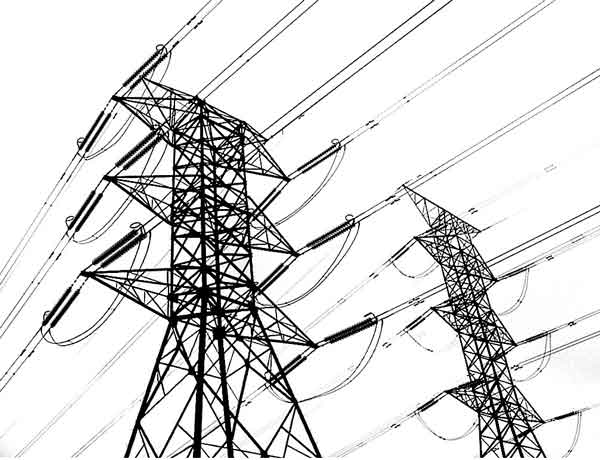
Ukraine Helps Spain Amid Blackouts
Ukraine-Spain Power Aid highlights swift international solidarity as Kyiv offers grid restoration expertise to Spain after unprecedented blackouts, aiding energy infrastructure recovery, interconnectors, and emergency response while operators restore power across Spain and Portugal.
Key Points
Ukraine sends grid experts to help Spain recover from blackouts, restore power, and reinforce energy infrastructure.
✅ Ukraine offers grid restoration expertise and emergency support.
✅ Partial power restored; cause of blackouts under investigation.
✅ EU funding and Ukrenergo bolster infrastructure resilience.
In a remarkable display of international solidarity, Ukraine has extended assistance to Spain as the country grapples with widespread power outages. On April 28, 2025, Spain and neighboring Portugal experienced unprecedented blackouts that disrupted daily life, including internet connectivity and subway operations. The two nations declared a state of emergency as they worked to restore power.
Ukraine's Offer of Assistance
In response to the crisis, Ukrainian President Volodymyr Zelensky reached out to Spanish Prime Minister Pedro Sánchez, offering support to help restore Spain's power grid. Zelensky emphasized Ukraine's extensive experience in managing energy challenges, particularly in fighting to keep the lights on during sustained Russian attacks on its energy infrastructure. He instructed Ukraine’s Energy Minister, Herman Haluschchenko, to mobilize technical experts to assist Spain swiftly. As of April 29, grid operators in both Spain and Portugal reported partial restoration of power, with recovery efforts ongoing. Authorities continue to investigate the cause of the outages.
Ukraine's Energy Crisis: A Background
Ukraine's offer of assistance is particularly poignant given its own recent struggles with energy security. Throughout 2024, Russia launched numerous aerial strikes targeting Ukraine's energy infrastructure, including strikes on western Ukraine that severely damaged power generation facilities and transmission networks. These attacks led to significant challenges during the winter season, including widespread blackouts and difficulties in heating households, prompting efforts to keep the lights on this winter across the country. Despite these adversities, Ukraine managed to navigate the winter without major power shortages, thanks to rapid repairs and the resilience of its energy sector.
International Support for Ukraine
The international community has played a crucial role in supporting Ukraine's energy sector, even as U.S. support for grid restoration has shifted, with continued aid from European partners. In July 2024, the European Union allocated nearly $110 million through the KfW Development Bank to modernize high-voltage substations and develop interconnectors with continental Europe's power system. This funding has been instrumental in repairing and restoring equipment damaged by Russian attacks and enhancing the protection of Ukraine's substations. Since the onset of the conflict, Ukraine's energy grid operator, Ukrenergo, has received international assistance totaling approximately €1.5 billion.
A Gesture of Solidarity
Ukraine's offer to assist Spain underscores the deepening ties between the two nations and reflects a broader spirit of international cooperation. While Spain continues its recovery efforts, the support from Ukraine serves as a reminder of the importance of solidarity, and of Ukraine's electricity reserves that help prevent further outages in times of crisis. As both countries work towards restoring and securing their energy infrastructures, their collaboration highlights the shared challenges and mutual support that define the European community.
Ukraine's proactive stance in offering assistance to Spain amidst the recent blackouts exemplifies the strength of international partnerships and the shared commitment to new energy solutions that overcome energy challenges. As the situation develops, the continued cooperation between nations will be pivotal in ensuring energy security and resilience as winter looms over Ukraine once more.
Related News
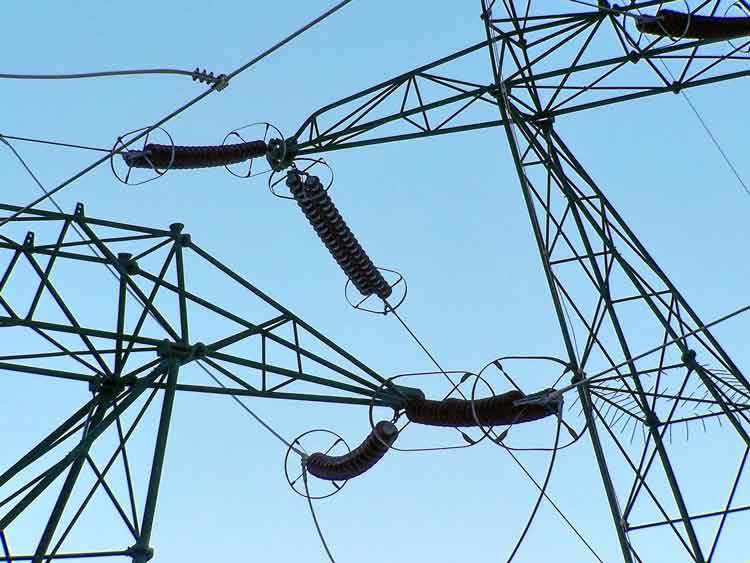
Bright Feeds Powers Berlin Facility with Solar Energy
Bright Feeds Solar Upgrade integrates a 300-kW DC PV system and 625 solar panels at the Berlin, CT plant, supplying one-third of power, cutting carbon emissions, and advancing clean, renewable energy in agriculture.
Key Points
An initiative powering Bright Feeds' Berlin plant with a 300-kW DC PV array, reducing costs and carbon emissions.
✅ 300-kW DC PV with 625 panels by Solect Energy
✅ Supplies ~33% of facility power; lowers operating costs
✅ Offsets 2,100+ tons CO2e; advances clean, sustainable agriculture
Bright Feeds, a New England-based startup, has successfully transitioned its Berlin, Connecticut, animal feed production facility to solar energy. The company installed a 300-kilowatt direct current (DC) solar photovoltaic (PV) system at its 25,000-square-foot plant, mirroring progress seen at projects like the Arvato solar plant in advancing onsite generation. This move aligns with Bright Feeds' commitment to sustainability and reducing its carbon footprint.
Solar Installation Details
The solar system comprises 625 solar panels and was developed and installed by Solect Energy, a Massachusetts-based company, reflecting momentum as projects like Building Energy's launch come online nationwide. Over its lifetime, the system is projected to offset more than 2,100 tons of carbon emissions, contributing significantly to the company's environmental goals. This initiative not only reduces energy expenses but also supports Bright Feeds' mission to promote clean energy solutions in the agricultural sector.
Bright Feeds' Sustainable Operations
At its Berlin facility, Bright Feeds employs advanced artificial intelligence and drying technology to transform surplus food into an all-natural, nutrient-rich alternative to soy and corn in animal feed, complementing emerging agrivoltaics approaches that pair energy with agriculture. The company supplies its innovative feed product to a broad range of customers across the Northeast, including animal feed distributors and dairy farms. By processing food that would otherwise go to waste, the facility diverts tens of thousands of tons of food from the regional waste stream each year. When operating at full capacity, the environmental benefit of the plant’s process is comparable to taking more than 33,000 cars off the road annually.
Industry Impact
Bright Feeds' adoption of solar energy sets a precedent for sustainability in the agricultural sector. The integration of renewable energy sources into production processes not only reduces operational costs but also demonstrates a commitment to environmental stewardship, amid rising European demand for U.S. solar equipment that underscores market momentum. As the demand for sustainable practices grows, and as rural clean energy delivers measurable benefits, other companies in the industry may look to Bright Feeds as a model for integrating clean energy solutions into their operations.
Bright Feeds' initiative to power its Berlin facility with solar energy underscores the company's dedication to sustainability and innovation. By harnessing the power of the sun, Bright Feeds is not only reducing its carbon footprint but also contributing to a cleaner, more sustainable future for the agricultural industry, and when paired with solar batteries can further enhance resilience. This move serves as an example for other companies seeking to align their operations with environmental responsibility and renewable energy adoption, as new milestones like a U.S. clean energy factory signal expanding capacity across the sector.
Related News
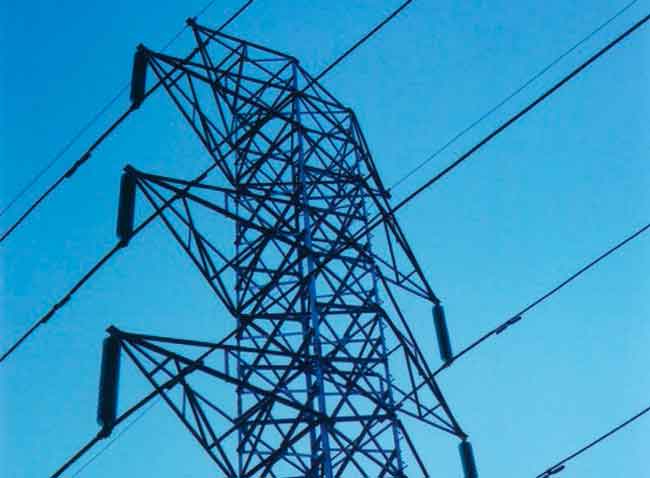
Cannes Film Festival Power Outage Under Investigation
Cannes Film Festival Power Outage disrupts Alpes-Maritimes as an electrical substation fire and a fallen high-voltage line trigger blackouts; arson probe launched, grid resilience tested, traffic and trains snarled, Palais des Festivals on backup power.
Key Points
A May 24, 2025 blackout in Cannes disrupting events, under arson probe, exposing grid risks across Alpes-Maritimes.
✅ Substation fire and fallen high-voltage line triggered blackouts
✅ Palais des Festivals ran on independent backup power
✅ Authorities probe suspected arson; security measures reviewed
A significant power outage on May 24, 2025, disrupted the final day of the Cannes Film Festival in southeastern France. The blackout, which affected approximately 160,000 households in the Alpes-Maritimes region, including the city of Cannes, occurred just hours before the highly anticipated Palme d'Or ceremony. French authorities are investigating the possibility that the outage was caused by arson.
Details of the Outage
The power disruption began early on Saturday morning with a fire at an electrical substation near Cannes. This incident weakened the local power grid. Shortly thereafter, a high-voltage line fell at another location, further exacerbating the situation. The combined events led to widespread power outages, affecting not only the festival but also local businesses, traffic systems, and public transportation, echoing Heathrow Airport outage warnings raised days before a separate disruption. Traffic lights in parts of Cannes and the nearby city of Antibes stopped working, leading to traffic jams and confusion in city centers. Most shops along the Croisette remained closed, and local food kiosks were only accepting cash. Train service in Cannes was also disrupted.
Impact on the Festival
Despite the challenges, festival organizers managed to keep the main venue, the Palais des Festivals, operational by switching to an independent power supply. They confirmed that all scheduled events and screenings, including the Closing Ceremony, would proceed as planned, a reminder of how grid operators sometimes avoid rolling blackouts to keep essential services running. The power was restored around 3 p.m. local time, just hours before the ceremony, allowing music to resume and the event to continue without further incident.
Investigations and Suspected Arson
French authorities, including the national gendarmerie, are investigating the possibility that the power outage was the result of arson, aligning with grid attack warnings issued by intelligence services. The prefect for the Alpes-Maritimes region, Laurent Hottiaux, condemned the "serious acts of damage to electrical infrastructures" and stated that all resources are mobilized to identify, track down, arrest, and bring to justice the perpetrators of these acts.
While investigations are ongoing, no official conclusions have been drawn regarding the cause of the outage. Authorities are working to determine whether the incidents were isolated or part of a coordinated effort, a question that also arises when utilities implement PG&E wildfire shutoffs to prevent cascading damage.
Broader Implications
The power outage at the Cannes Film Festival underscores the vulnerability of critical infrastructure to potential acts of sabotage. While the immediate impact on the festival was mitigated, the incident raises concerns about the resilience of energy systems, especially during major public events, and amid severe weather like a B.C. bomb cyclone that leaves tens of thousands without power. It also highlights the importance of having contingency plans in place to ensure the continuity of essential services in the face of unexpected disruptions.
As investigations continue, authorities are urging the public to remain vigilant and report any suspicious activities, while planners also prepare for storm-driven outages that compound emergency response. The outcome of this investigation may have implications for future security measures at large-scale events and the protection of critical infrastructure.
While the Cannes Film Festival was able to proceed with its closing events, the power outage serves as a reminder of the potential threats to public safety, as seen when a Western Washington bomb cyclone left hundreds of thousands without power, and the importance of robust security measures to safeguard against such incidents.
Related News
EF Partner Media
Related Articles From ET Magazine

Understanding the IEC 61850 Protocol in Substation Automation
The IEC 61850 protocol has become the global standard for substation automation, enabling high-speed communication, interoperability, and streamlined integration of intelligent electronic devices (IEDs). It plays a foundational role in transforming traditional substations into digital substations that support real-time control, monitoring, and automation across the electrical grid.
What Is the IEC 61850 Protocol?
IEC 61850 is a communications protocol developed by the International Electrotechnical Commission (IEC) for automated substation systems. Unlike older legacy protocols that rely on fixed, vendor-specific formats, IEC 61850 uses an object-oriented data model and abstract communication services to create a standardized method for data exchange among IEDs, SCADA systems, and Human-Machine Interfaces (HMIs).
Its architecture is based on Ethernet and supports both client-server and peer-to-peer communications, making it ideal for smart grid applications that require high-speed, deterministic messaging.
Key Features of the IEC 61850 Protocol
The success of IEC 61850 in modern substation automation is driven by several key features that distinguish it from older communication standards. These capabilities support high-speed event handling, structured data modeling, and network flexibility.
Interoperability Across Devices
IEC 61850 enables seamless integration of equipment from multiple manufacturers by defining common data structures and naming conventions. This interoperability reduces engineering time and ensures long-term system flexibility.
High-Speed Messaging with GOOSE
The protocol includes GOOSE messaging (Generic Object-Oriented Substation Events), which allows IEDs to communicate critical event data in under 4 milliseconds. These peer-to-peer messages operate at the Ethernet layer, making them ideal for protection and control schemes.
Process Bus and Station Bus Architecture
IEC 61850 divides communication into two logical layers:
Station Bus: Handles data exchange between IEDs, SCADA, and HMIs using MMS (Manufacturing Message Specification).
Process Bus: Replaces traditional copper wiring by transmitting sampled values (SV) and control signals between field equipment and IEDs over Ethernet via Merging Units (MUs).
Scalable Data Modeling
The standard uses Logical Nodes and Logical Devices to define all data points in a substation. This object-oriented modeling enables efficient configuration, simplified diagnostics, and faster system deployment.
Time Synchronization
IEC 61850 supports Precision Time Protocol (PTP) to align time-sensitive operations across devices, which is essential for fault analysis, event recording, and system coordination.
Benefits of the IEC 61850 Protocol
Beyond its technical specifications, IEC 61850 delivers significant operational and economic advantages to utilities and grid operators. These benefits make it a strategic choice for modernizing substation infrastructure.
Reduced wiring complexity and installation costs
Improved protection system response through fast GOOSE messaging
Vendor-agnostic system design
Future-proofing with support for emerging smart grid technologies
Easier integration of renewable energy, energy storage, and microgrids
Enhanced cybersecurity through standards such as IEC 62351
GOOSE Messaging: Real-Time Communication
A standout innovation in the IEC 61850 protocol is GOOSE messaging, which enables ultra-fast, deterministic communication between IEDs. This feature is crucial for protective relaying and real-time system response.
GOOSE is used for event-driven messaging with millisecond latency.
IEDs can send and receive multicast messages, allowing instant coordination of devices during fault conditions.
GOOSE supports breaker interlocking, trip signals, and status broadcasts across the substation Ethernet network.
Process Bus vs. Station Bus: Streamlining Substation Design
Modern substation design increasingly depends on separating logical functions into dedicated communication layers. The IEC 61850 protocol facilitates this through its dual-bus architecture, improving flexibility and reducing costs.
The station bus handles monitoring, metering, and supervisory control via MMS messages.
The process bus connects high-voltage equipment to IEDs using digitized sampled values, eliminating the need for complex analog cabling.
This architecture reduces physical wiring, enhances signal accuracy, and supports remote diagnostics and maintenance.
Future-Proofing Substations with IEC 61850
As electric utilities face growing complexity from distributed energy resources, aging infrastructure, and cybersecurity threats, IEC 61850 provides a path forward. Its modular design and upgrade-friendly structure make it well-suited for evolving grid demands.
Easily supports DER integration, such as solar, wind, and battery systems
Enables wide-area monitoring systems (WAMS) and real-time situational awareness
Facilitates edge computing and virtualized protection systems
Compatible with ongoing enhancements in digital security and network segmentation
The IEC 61850 protocol is the cornerstone of modern substation automation, providing a robust, interoperable, and future-ready platform for intelligent grid operations. With features like GOOSE messaging, process bus architecture, and standardized data models, it enables faster fault response, reduced engineering effort, and seamless integration of diverse systems.
As the power grid evolves to accommodate renewable energy, electrification, and decentralization, IEC 61850 remains essential to building safe, smart, and scalable digital substations.
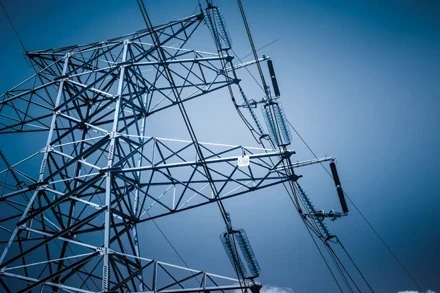
Climate Change Fuels Spread of Deadly Fungal Infections in the UK
As global temperatures rise, scientists warn that the UK faces an increasing threat from deadly fungal infections, particularly those caused by the Aspergillus species. These fungi, which can lead to severe respiratory illnesses and brain infections, are projected to expand their range into northern Europe, including the UK, due to climate change.
The Aspergillus Threat
Aspergillus fumigatus and Aspergillus flavus are the primary culprits behind invasive aspergillosis, a life-threatening disease that affects the lungs and can spread to other organs, including the brain. These fungi produce airborne spores that can be inhaled, posing significant risks to individuals with weakened immune systems, such as those undergoing chemotherapy or organ transplants. In the UK, the incidence of aspergillosis is expected to rise as the climate warms, potentially leading to increased hospital admissions and mortality rates.
Climate Change and Fungal Expansion
Research indicates that rising global temperatures are creating more favorable conditions for the proliferation of Aspergillus species. A study led by Norman van Rhijn at the University of Manchester suggests that by 2100, A. fumigatus could expand its range by 77%, potentially exposing an additional 9 million Europeans to infection. Similarly, A. flavus is expected to spread into new regions, including parts of the UK. These projections underscore the urgent need for enhanced surveillance and preparedness to mitigate the impact of these fungal pathogens.
Challenges in Detection and Treatment
Diagnosing fungal infections can be challenging, as symptoms often overlap with other respiratory illnesses. Moreover, antifungal treatments are limited, and resistance is becoming more prevalent. The World Health Organization lists A. fumigatus as one of the most critical fungal pathogens, highlighting the need for improved diagnostic tools and treatment options.
Impact on Agriculture and Food Security
Beyond human health, Aspergillus species pose a significant threat to agriculture. A. flavus produces aflatoxins, potent carcinogens that can contaminate crops such as maize, peanuts, and cotton. Climate change is expected to exacerbate the spread of these toxins, affecting food safety and security. Increased temperatures and humidity levels can enhance the growth of A. flavus, leading to higher aflatoxin contamination in crops.
Urgent Need for Action
Experts emphasize the importance of addressing the dual threats of climate change and fungal infections. Investing in fungal research, improving diagnostic capabilities, and developing effective treatments are critical steps in mitigating the impact of these pathogens. Public health systems must be equipped to recognize and respond to emerging fungal threats, particularly as climate change continues to alter the distribution of infectious diseases.
In conclusion, the spread of deadly fungal infections in the UK, driven by climate change, presents a multifaceted challenge to public health and agriculture. Proactive measures are essential to prevent widespread outbreaks and safeguard the well-being of populations at risk.
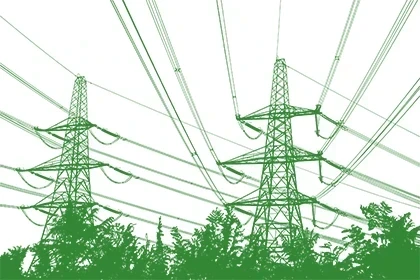
Climate Change Impacts and Adaptation Efforts in British Columbia
As of early May 2025, British Columbia is experiencing significant climate-related challenges, including rising temperatures, increased wildfire risks, and ecological disruptions. These developments underscore the urgency for comprehensive adaptation strategies to safeguard communities and ecosystems.
Escalating Wildfire Risks
The province is witnessing an early onset of wildfire season, with 107 active fires reported. Experts attribute the heightened risk to a combination of warmer temperatures and prolonged drought conditions. The BC Wildfire Service has indicated a "high potential for an active spring wildfire season," emphasizing the need for preparedness and swift response measures.
Ecological Disruptions in Urban Forests
In Vancouver's Stanley Park, climate change is manifesting through the proliferation of the western hemlock looper moth, which has led to the death of approximately 160,000 trees. These moths thrive in warmer winters, facilitated by climate change, and have caused significant ecological damage to the park's century-old trees.
Urban Heat and Infrastructure Challenges
Projections indicate that by 2050, Vancouver's climate could resemble that of San Diego, with average summer temperatures rising and increased occurrences of "tropical nights." This shift necessitates urgent adaptations in urban planning and infrastructure to mitigate heat-related health risks and manage water resources effectively.
Strategic Adaptation Initiatives
In response to these challenges, Vancouver has updated its Climate Change Adaptation Strategy, focusing on enhancing resilience against extreme heat, poor air quality, drought, extreme rainfall, and sea level rise. Key initiatives include:
-
Urban Greening: Expanding tree canopy coverage to 30% by 2050 to provide natural cooling and improve air quality.
-
Building Retrofits: Upgrading 30 buildings to enhance cooling and reduce emissions.
-
Green Infrastructure: Implementing green rainwater infrastructure across three hectares of city streets to manage stormwater and mitigate urban heat island effects.
-
Coastal Adaptation: Developing a city-wide coastal adaptation policy to address sea level rise and coastal flooding.
Community Engagement and Equity
The strategy emphasizes equity, recognizing that climate change disproportionately affects vulnerable populations. Each action plan incorporates equity outcomes, ensuring that adaptation measures benefit all residents, particularly those most at risk.
British Columbia's proactive approach to climate adaptation, exemplified by Vancouver's updated strategy, sets a precedent for other regions facing similar challenges. By integrating climate resilience into urban planning and community development, the province aims to safeguard its residents and ecosystems against the escalating impacts of climate change.

Canada Files 200 Fisheries Act Charges Against ArcelorMittal for Alleged Environmental Violations
In a significant enforcement action, Environment and Climate Change Canada (ECCC) has laid 200 charges against ArcelorMittal Canada, alleging violations of the Fisheries Act. The charges pertain to the unlawful deposit of harmful substances into fish-bearing waters in Quebec between 2014 and 2022. These alleged infractions occurred at the Fire Lake Mine and the Mont-Wright mining complex, the latter being the largest open-pit iron mine in Canada. The affected waterways flow into the Moisie River, a provincially administered aquatic reserve and one of North America's major salmon rivers.
Background of the Allegations
The Fisheries Act prohibits the deposit of deleterious substances into waters frequented by fish or in places where such substances may enter these waters. ECCC's enforcement officers initiated investigations into ArcelorMittal Canada's operations at the Fire Lake and Mont-Wright sites after receiving reports of potential environmental violations. The subsequent investigations led to the filing of 200 charges against the company for allegedly permitting or causing the deposit of harmful substances into the aforementioned waterways.
Environmental Significance of the Moisie River
The Moisie River holds ecological importance due to its role as a habitat for Atlantic salmon, a species of significant conservation concern. The river's designation as a provincial aquatic reserve underscores its environmental value and the necessity for stringent protection measures. Alleged contamination of its tributaries could have detrimental effects on local biodiversity and water quality, highlighting the gravity of the charges against ArcelorMittal Canada.
Previous Environmental Infractions
This is not the first instance of ArcelorMittal Canada facing legal action for environmental violations. In 2022, the company and its partner, 7623704 Canada Inc., were fined a total of $15 million for offenses related to the Mont-Wright mining complex. These offenses included unauthorized deposits of toxic substances into fish-bearing waters and the failure to comply with effluent monitoring regulations. The court's decision to impose substantial fines reflects the seriousness with which environmental breaches are treated under Canadian law.
Potential Implications for ArcelorMittal Canada
If convicted, ArcelorMittal Canada could face significant legal and financial repercussions. The Fisheries Act provides for substantial penalties, including fines and orders for remediation. Additionally, a conviction could lead to reputational damage, affecting the company's standing with stakeholders and the public. The ongoing legal proceedings will determine the extent of the company's liability and the appropriateness of any penalties.
Broader Environmental Enforcement Context
The charges against ArcelorMittal Canada underscore the Canadian government's commitment to enforcing environmental protection laws. ECCC's proactive approach in investigating and prosecuting alleged violations serves as a deterrent to other corporations and reinforces the importance of corporate responsibility in environmental stewardship. The outcome of this case may influence future enforcement actions and the development of environmental policies in Canada.
The 200 charges laid against ArcelorMittal Canada highlight the critical need for adherence to environmental regulations in industrial operations. As the legal process unfolds, it serves as a reminder of the importance of safeguarding Canada's natural resources and holding corporations accountable for their environmental impact. The case will likely have lasting implications for environmental governance and corporate accountability in the country.
Electricity Today T&D Magazine Subscribe for FREE

Stay informed with the latest T&D policies and technologies.
- Timely insights from industry experts
- Practical solutions T&D engineers
- Free access to every issue
EF T&D Live Online Forums
Register for our FREE T&D Live Online Forums and join our live expert-led webinars on the latest electrical industry topics.- Industry expert insights on trending technologies
- Free access to recorded webinar presentations
- Downloadable PDF presentations
- Convenient viewing on your schedule—no attendance required








